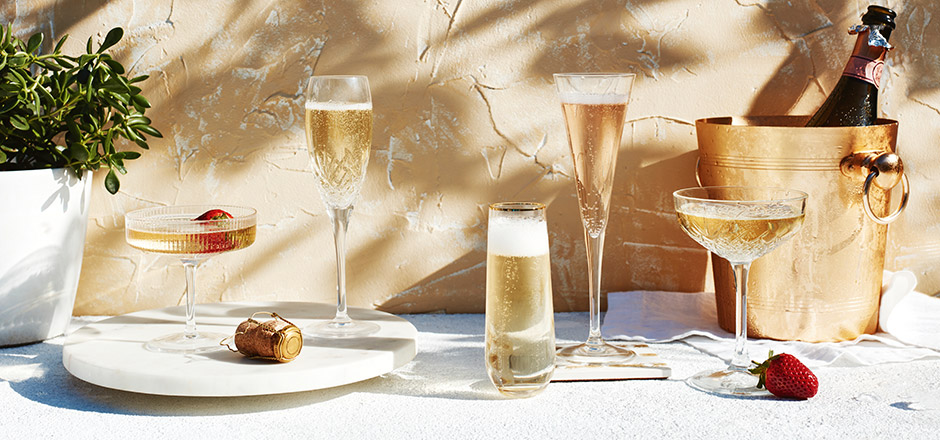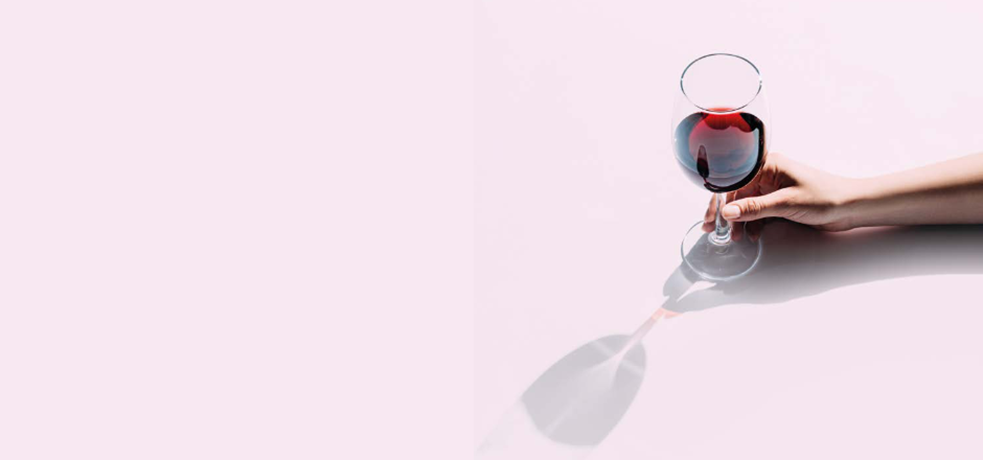- The Grape
The Only Guide to Champagne You Will Ever Need
Read Time 4 Minutes
Posted 31 Aug 2022
By Vintage Cellars
Sparkling wine may come in many forms but many believe the King of them all is Champagne. Raise a glass to this French drop and find out why.
Of all the sparkling varieties the wine world has to offer, none is more synonymous with luxury than French Champagne. Winemakers in Champagne developed many of the techniques used to craft great sparkling wines, and to this day, they remain the masters of delivering an accomplished blend of elegance, finesse and fine, silky bubbles.
But how does Champagne differ from sparkling wine? What boxes must a bubbly tick to be considered capital-C Champagne? What makes Champagne so special in the eyes of vintners and oenophiles? Whether you consider yourself a connoisseur or an amateur wanting to learn more, here is everything you need to know about all things bright, bubbly, beautiful Champagne.


Champagne sparkling wine is the namesake of Champagne, France
Champagne hails from a small region in northern France, which is located just east of Paris and centred around the towns of Reims and Epernay. The sparkling wine itself is eponymous with this Champagne region of France, and it is only from this appellation that true Champagne can be produced.
The key influence is the area’s frosty climate, one of the coolest for any wine region, which is instrumental in the subtlety and bright acidity of its wines. Combined with Champagne’s chalky soils, conditions are perfect for chardonnay, pinot noir and pinot meunier (the three most important varieties in Champagne alongside pinot blanc, pinot gris, petit meslier and arbane) to gently ripen and create deliciously delicate and detailed sparkling wines which radiate their finesse from every pore.
Dom Pérignon is cited as the godfather of Champagne, with the first of his bottles dating back as far as the 1600s. One of the requisites of Champagne is that it must be produced via methode champenoise, which is known as methode traditionelle elsewhere in the world, wherein the wine undergoes a secondary fermentation in the bottle. This is what produces the carbon dioxide that lends itself to creating Champagne’s delicate effervescence.
How does French Champagne taste?
There are many types of Champagne, determined by a range of styles and, in turn, flavour profiles, although all generally share a couple of common features. The most important is the yeast influence depending on the length of a wine’s ageing. Non-vintage wines with two to three years ageing have nougat and delicate pastry elements which, in longer aged wine vintage Champagnes and prestige cuvées, are more like a basket of freshly baked bread.
Similarly younger non-vintage Champagnes have gentle citrus and floral fruits. Vintage Champagnes and aged non-vintage wines take on more honeyed and tropical fruit notes which match beautifully with their rich yeasty complexity.
Champagne can be just as complex as other wines!
You’ve heard of blanc de blancs but have you taken its mysterious twin, blanc de noirs, for a spin? Blanc de noirs are Champagnes and sparkling wines made with red grapes pinot noir and pinot meunier, which provide a subtle bronze colour. While blanc de blancs are all about delicacy and finesse, blanc de noirs deliver richness and power with a delicious toastiness and subtle white strawberry fruits.
Then, of course, there are the rosé Champagnes, which are either a blend of white and red wine, or owe their colour to an extended maceration in the red grapes — a process known as saignée. Commonly referred to as pink Champagne due to their blush hues, these wines often have a bouquet of rosy florals, notes of red fruit like strawberry and brambles, and tangy acidity with a dry finish.
What food pairs best with Champagne?
Unsurprisingly, the delicacy of most sparkling wines makes them ideally suited to gently flavoured dishes. Champagne’s perfect match? Salty apéritifs. Whether it is smoked salmon crostini, crab toasts or prosciutto wrapped melon, Champagne is a hit. Blanc de noir Champagnes are also great food wines — think roast duck or fried chicken.
But don’t stop there, as Champagne also pairs perfectly with a range of main courses, from seafood to creamy pastas and anything fried. Yes — fish and chips with French Champagne is a match made in heaven.
Need a glass of Champagne for your dinner party? Here are five of the best Champagnes to put on the table.
Mumm Millesime Vintage Champagne
This Mumm Champagne shows bold characters and depth while balancing itself with tropical fruits, crisp apple, baked toffee and toasty nuances. Boasts an aromatic complexity allowing for the harmonious expression of the power of the pinot noirs and the elegance of the chardonnays.
Veuve Clicquot Non Vintage Rosé Champagne
Breaking tradition in 1818, Madame Clicquot created a magnificent blend of her still white and red wines to create this Veuve Champagne. It has a fresh first impression followed by ripe red fruits. Perfectly balanced, this wine combines elegance and personality.
Bollinger Champagne Special Cuvée Brut NV
A delicious Bollinger Champagne that is constant in style and quality, in its bouquet, body, balance, vinosity and finesse. This brut Champagne has a full-bodied toasty character with pear, brioche and praline aromatics followed by apricot, semolina cake and tropical fruit flavour.
Pommery Champagne Brut Royal NV
This Pommery Champagne is elegant and lively with small assertive notes of red fruits. A rounded, rich, delicate wine that lingers in the mouth. The blend is a third between chardonnay, pinot noir and pinot meunier for balance and complexity. You will be sure to enjoy this Champagne at any time of day or night.
- The Grape
- View More Posts The Grape








